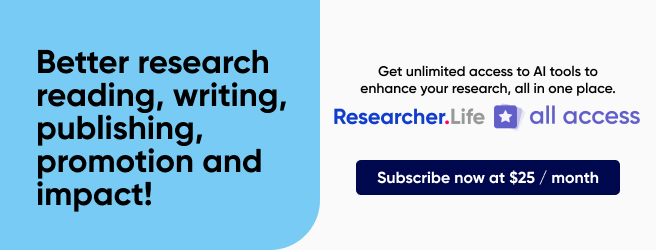Dealing with journal guidelines: Mastering the art of research paper submission

You have prepared a solid research question, collected your data, and decided what to write. Now it’s time to open your word processor or text editor and put the information on the page, right? Well, perhaps. Have you checked the journal guidelines? Depending on the journal guidelines, your paper can end up looking very different.
The importance of journal submission guidelines
Early research publications had very few guidelines. Scholars wrote their papers as they wished and any alterations were made at the discretion of the editors. As scholarly publishing grew, researchers and publishers settled on certain standard practices that became formalized in style manuals like The Chicago Manual of Style or the MLA Handbook, which promoted uniformity in format. Nowadays, nearly every publication will have a preferred house style that reflects the expectations of the research field and the branding of the journal or periodical.
The goal of guidelines is not to reduce research writing to a pro forma. It is to facilitate every step of research publication, including manuscript preparation, peer review, typesetting, and even reading the paper. Therefore, these guidelines can be considered a way of improving the reliability and practical use of research papers.
Typical guidelines and how to check them
If you take away nothing else from this article, remember that checking journal submission guidelines is imperative. Almost all publications have a dedicated page that lists their guidelines. These pages can be in-depth, multi-page instruction manuals defining everything from indentation to acceptable abbreviations, to a few sentences outlining basic sections and declarations expected. In any case, treat the page like a checklist. Check if each point is relevant to your paper and if so, whether you have met the guideline.
In most journals, this page can be found in a navigation bar along the side or top of their homepage with a title like “Preparing your Manuscript,” “Author Guidelines,” or “For Authors.” It may also be found in a collection of pages with titles like “About the Journal” or “Author Center.” Below are two examples of showing where and how some journals list guidelines.
Example 1. The top bar of Biomaterials with the “Guide for authors” menu highlighted. Many other Elsevier publications will display the guidelines in this way.
Example 2. In this example from the World Journal of Gastroenterology, the guidelines are on the side navigation bar. N.B. that there are multiple pages (my highlights) relevant to preparing your manuscript.
As a manuscript editor, I find that many researchers make the same common errors in following guidelines. Some common guidelines that go unfollowed include:
- English variety: Do they ask for British or American English standards? Adjust your spellchecker accordingly.
- Page setup: Check if they request a specific spacing, font size, indent, margin, line/page numbering, or paper size.
- Word counts: Check the word counts both for the main text and abstract. Check whether the main text count is inclusive of declarations, figure/table legends, and references.
- Headings: Do they use title or sentence capitalization? Should they be numbered? Did you include all section headings required?
- References: Each journal requires a specific reference format (either a widely used standard format or a custom, journal-specific format). Make sure that your references follow all aspects of the journal’s preferences. Reference-management software programs, like EndNote or Zotero, can facilitate this.
- Declarations: Ensure that all declaration headings are included. Examples include funding, a data statement, or author contributions. For research on humans and animals, ethical statements are especially crucial.
- Abbreviations: Do they need a list? Include if requested. Some journals may also have a list of abbreviations that require no introduction.
- Images: Check if the image format and resolution are appropriate. Ensure that it’s appropriately placed in or after the manuscript, provide raw images when requested.
- Highlights: Check if a highlights file is requested and prepare accordingly.
Additionally, don’t count on every guideline being on the Author Guidelines page. Many journals will also include relevant information on webpages addressing the submission process, article types, and journal scope. As one example, the New England Journal of Medicine puts various guidelines on their Article Types page that are not included on the New Submissions page.
Dealing with confusing or conflicting guidelines
Journals may have conflicting guidelines. For example, they may state that they want APA formatting for references, but also ask that you provide the names of every author in the reference. When there are conflicts between a published style guide and the journal guidelines, the journal guidelines should take precedence.
Less often, journals may contradict their own guidelines, such as by stating that they want figures placed at the end of the manuscript and saying that they want figures as separate files. In these cases, check if they have a template file and follow that template if it is included. Otherwise, you can select one guideline and leave a comment in the manuscript that they have provided conflicting information.
Journals may also lack some guidelines. For example, they may not make clear whether you mark author affiliations with letters or numbers. In this case, checking recent articles can make clear what they tend to use.
Finally, don’t hesitate to reach out for help. Ask colleagues who have experience with the journal if you are unsure. If you have the time, you can reach out directly to the journal’s main point of contact for submissions and ask for clarifications.
Other tips for handling guidelines
- Decide an appropriate target journal early on in your manuscript preparation. Guidelines can vary greatly depending on the target journal. Preparing your paper according to a certain format only to have to overhaul your paper according to another set of guidelines can result in wasted effort.
- Make use of automated functions. Even if a journal offers format-free submission, it’s still worthwhile to use automated reference formatting software and journal submission templates. These are not only big timesavers in terms of time spent formatting, but they also allow you to quickly change to a different journal format should your initial submission be rejected.
- Don’t forget third-party checklists. Many journals now require checklists such as a STROBE or CONSORT checklist for observational and randomized clinical studies, respectively. When these are requested, ensure that you have downloaded a copy, checked your manuscript, and included the checklist with your submission.
Conclusion
Guidelines can sometimes seem counterintuitive, but they can provide you with a great opportunity to revise your paper and ensure that your writing addresses what the journal is looking for. Refer to the guidelines frequently and you might find they actually help you prepare your paper more than they hinder your ability to read and write freely.
Comments
You're looking to give wings to your academic career and publication journey. We like that!
Why don't we give you complete access! Create a free account and get unlimited access to all resources & a vibrant researcher community.

Subscribe to Journal Submission & Peer Review













